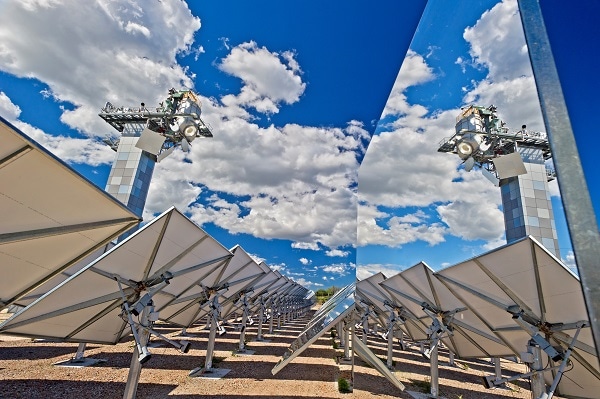Dec 6 2016

Recent findings reveal that incorporating a few nanometers of a thin layer of aluminium oxide can protect a perovskite solar cell against the effects of humidity, which is still a significant hinderance to the commercial application of this new type of solar cell. A surprising plus point is a yield boost of 3 %. These findings were published in the Energy and Environmental Science journal by researchers from Eindhoven University of Technology (TU/e) and research institute ECN, part of the Solliance collective.
In recent years, solar cells produced using perovskite have undergone rapid development. Perovskite is a mineral that has matching crystal structure as calcium-titanium-oxide (CaTiO3). The yield of this type of solar cell has increased to 22 % within a span of a few years. A downside faced at the moment, though, is the detrimental effect of humidity: water vapor present in the atmosphere reacts with the perovskite crystals resulting in a significant reduction in the yield over time. This instability hinders successful launch into the market.
Anti-humidity protection
The researchers covered the sensitive layer of perovskite with a few atomic layers of aluminum oxide to protect against the detrimental effects of humidity. These layers were contained within the solar cell, between the layers of perovskite and electric contact. The researchers chose aluminum oxide (Al2O3) as it can form instantly on any kind of surface.
Although Al2O3 has electrically insulating properties, it can still be used as a buffer layer between the semi-conductive perovskite and the conductive contacts by limiting the thickness of the layer to one nanometer or less. Charge carriers can then tunnel electrically through the insulator layer.
Dibyashree Koushik, FOM PhD student and first author (TU/e group Plasma and Materials Processing)
Comparing layer/no layer
After they were manufactured, whereby thin layers were applied with accurate composition using atomic layer deposition (ALD), the team compared the stability of these cells with identical cells that did not have this layer.
The complete cells were not provided any other protection against humidity with sealed packaging. It was observed that the cells containing the Al2O3 layer realized 60-70 % of their original yield while the reference cells managed just 12 % after being exposed to humid atmosphere for two months.
Higher yield
Furthermore, the layer increased the yield from 15 % to 18 %.
That was an extra bonus for us. We had not expected this and we cannot exactly explain why it is. But we will certainly be investigating. They are constructed in a completely different way to the simple, scalable structure we chose. But the stability will very probably also increase in those cells.
Prof. Dr. Ruud Schropp (TU Eindhoven), leader of the study
Broad range
The fact that the protective aluminum oxide layer is not added to the outer side, as attempted by other researchers, also makes it possible to use a wide range of materials on both sides of the solar cell and allows the highest penetration of light in the perovskite layer and thus the optimum utilization of electrical current. Schropp: “All this and more robust use of the cells.”
Reference
D. Koushik, W.J.H. Verhees, Y. Kuang, S. Veenstra, D. Zhang, M.A. Verheijen, M. Creatore, and R.E.I. Schropp, High-Efficiency Humidity-Stable Planar Perovskite Solar Cells Based On Atomic Layer Architecture, Energy and Environmental Science (5 december 2016). The study was co-funded by the FOM Foundation.